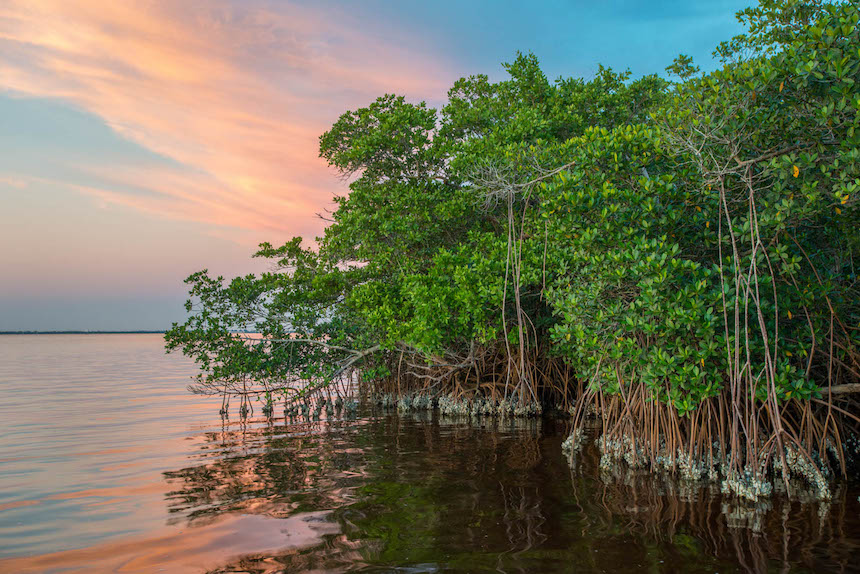
The threat to coastal regions posed by climate change, overdevelopment and other human caused stressors is well-established. Among the most prized and valuable land throughout the world, shorelines everywhere are imperiled by sea level rise, beach erosion and flooding. But a recently published NASA-funded research study in which Villanova University Biology Professor Samantha Chapman played a key role has discovered a new, natural phenomenon that could offer an economic and ecological solution to coastal wetland protection—the spread of mangrove trees.
Mangroves are tropical trees that grow in coastal intertidal zones, notable for their dense tangles of prop roots which serve as highly effective shields for coastlines by reducing the force of breaking waves, decreasing erosion and increasing sediment deposition. These trees are rapidly moving northward in Florida due to the lack of hard freezes. Once there, they change habitats previously dominated by salt marshes into mangrove swamps.
The new study, titled, “Impacts of mangrove encroachment and mosquito impoundment on coastal protection services,” compares the coastal protection value of salt marshes with mangroves along Florida’s East central coast and the overlying area of The Merritt Island National Wildlife Refuge (MINWR) in which NASA’s Kennedy Space Center (KSC) is located.
Villanova notes that the study, published in Hydrobiologia, turned up some remarkable results in comparing the protective value of salt marshes to mangroves (see infographic above). Mangrove expansion was the clear winner in providing superior coastal protection over salt marshes. Mangrove habitats provide a staggering 800 per cent more coastal protection than salt marshes. In all, mangrove habitats could provide $4.9 million worth of coastal protection more than manmade barriers.
In the United States alone, the study points out, wetland coastal protection services provide an estimated $23.2 billion per year of protection against economic losses as well as deaths associated with major storm events.
Although the impact of impending climate change is uncertain, the study concludes that “Integrating ecosystem-based approaches and ecological engineering may offer a way to mitigate and adapt to the effects of rising seas and intensifying storms.”
— Read more in Cheryl L. Doughty et al., “Impacts of mangrove encroachment and mosquito impoundment management on coastal protection services”, Hydrobiologia (10 May 2017) (DOI: 10.1007/s10750-017-3225-0)

